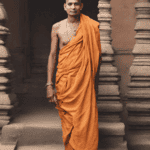Hindus celebrate various festivals in differing ways and on locality wise. The article is to elaborate on the festivals, its importance and the way it is celebrated in a specific area. India is a country where unity in diversity is in practice. Henceforth, the festivals are varied with its practice of observation according to the area.
1. Diwali
The festival is known for its lights that are lit throughout the House, Mandir or the place of celebration. Besides, the lighting of the festival, sweets are being distributed among friends and relatives.
More often Goddess Laxmi is a preferential Goddess of worship in the festival. The day is meant for asking prosperity and varied heritage throughout life.
Mythological Reasons
Many interesting and differentiating stories are told as fairy tales.
- The fall of the demon, Narakasura by his father Lord Krishna is the cause of the Diwali celebration and the stories are extended likewise.
- Also, the return of Rama along with wife Sita and brother Laxmana after the long exile of 14 years is the ultimate reason for Diwali.
However, the reason for the celebration may vary among people but the ultimate reason is too lit up the world and soul for the victory of good, knowledge against the evil and the ignorance.
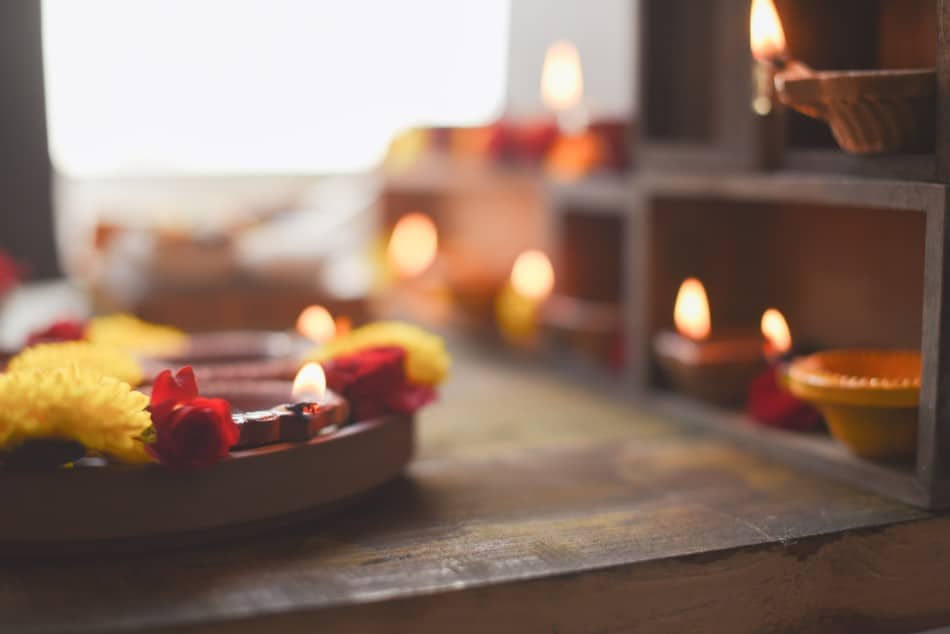
Significance: Diyas and lighting, home decoration, shopping, fireworks, puja (prayers), gifts, feast, and sweets
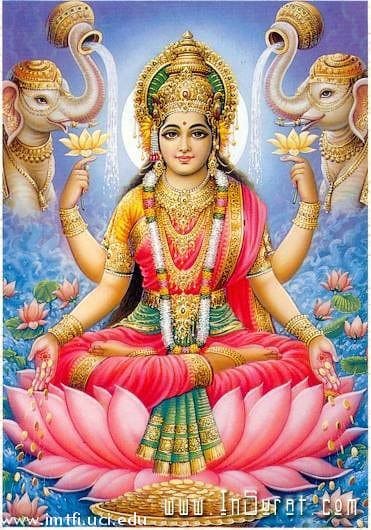
God/Goddess prayed: Lakshmi
Dressing
For men, traditional ‘Dhoties’ and shirting are preferred but for the women, it is beautiful and coruscating saree collections. Dhoties and Saree are replaced with Sharwani and the Gagra – Choli for the men and women, respectively, in the states of Northern India. For the kids, dresses are designed and hanged out with illuminating attraction.
Food Cooked: Sweets like Gulab Jamun, Kheer, Vada, etc.
States celebrating: All over India and 25 Countries around the world
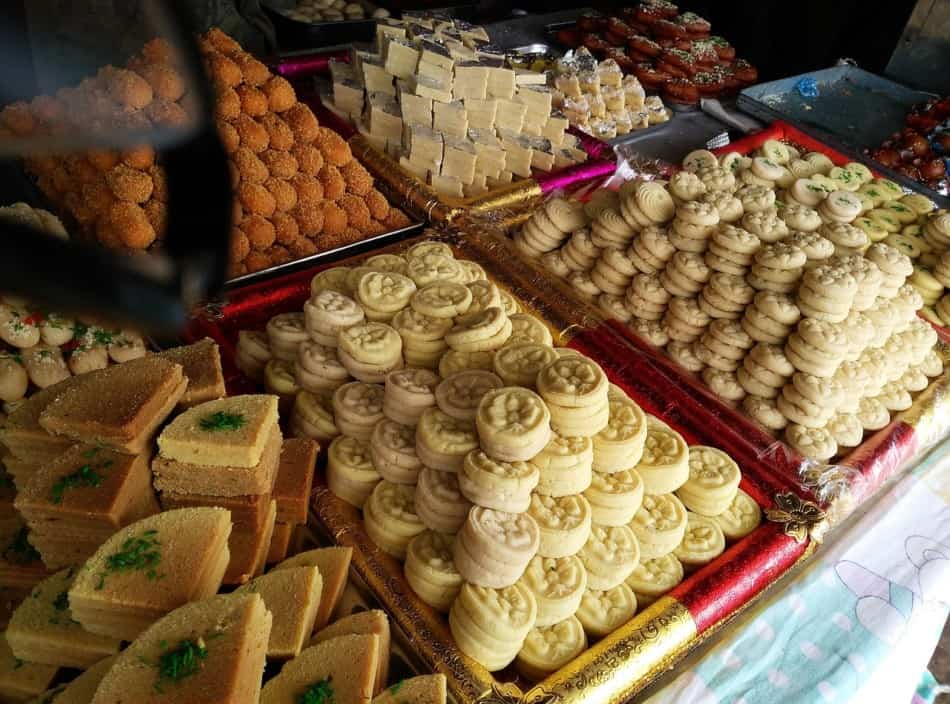
When: Generally, in the months of Aug to October
2. Dussera
The tenth day of Navrathri is Dussera. Festivity involves recalling the incident of demolishing Demon ‘’Mahishasuran’’ by the triple mighty force of Goddesses.
Mythological Reasons
Dussera is also known as ‘’Vijaya Dashami’’. The festival is observed fifteen days before Diwali as the fall of Demon ‘’Mahishasuran’’ defeated by Triple powered Devi (Saraswati, Laxmi, and Parvathi). Usually, the ten days celebration is the specialty of the festival.
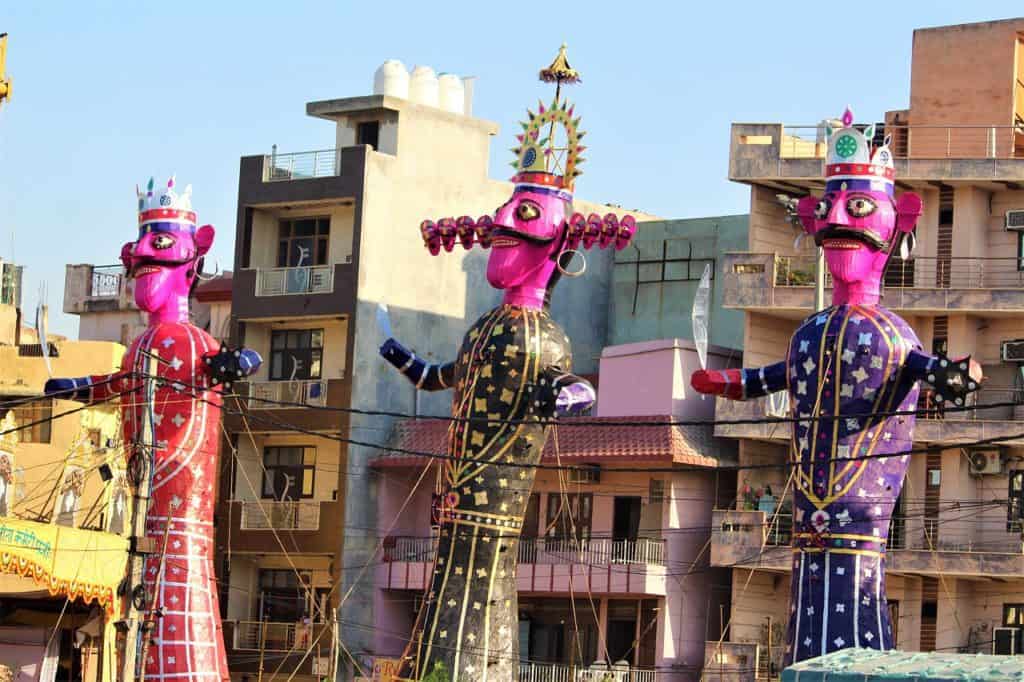
Goddess worshipped: Trinity of female powers Laxmi, Saraswati, and Parvathi.
Dresses: No special preference is given but insisted to visit temples.
Food Cooked: Special and sweet Pongal, ‘’Sundal’’ and fruits as offerings.
When and where
In India, Kolkata is highly specified to observe the festival followed by ‘’Kollur’’ in Karnataka and Tamil Nadu ‘’Kulasekarapatinam’’ are other Cities known for Dussera celebrations.
Every year, the festival commences mid- September and ends at the beginning of October.
3. Holi
The festival of colors is also known as Holika Dahan is observed as the sign of the fall of evil and the rise of Goodness.
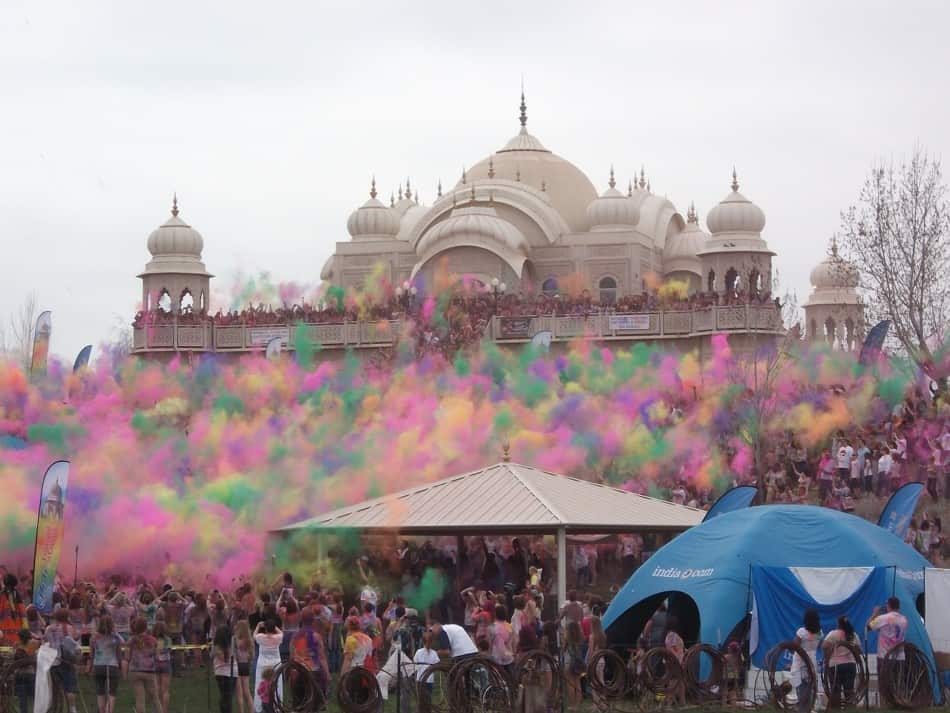
Mythological reasons
Lord Vishnu incarnated as ‘’Narasimha’’ on the rescue of his devotee Prahlad who challenges his father in the name of God Vishnu.
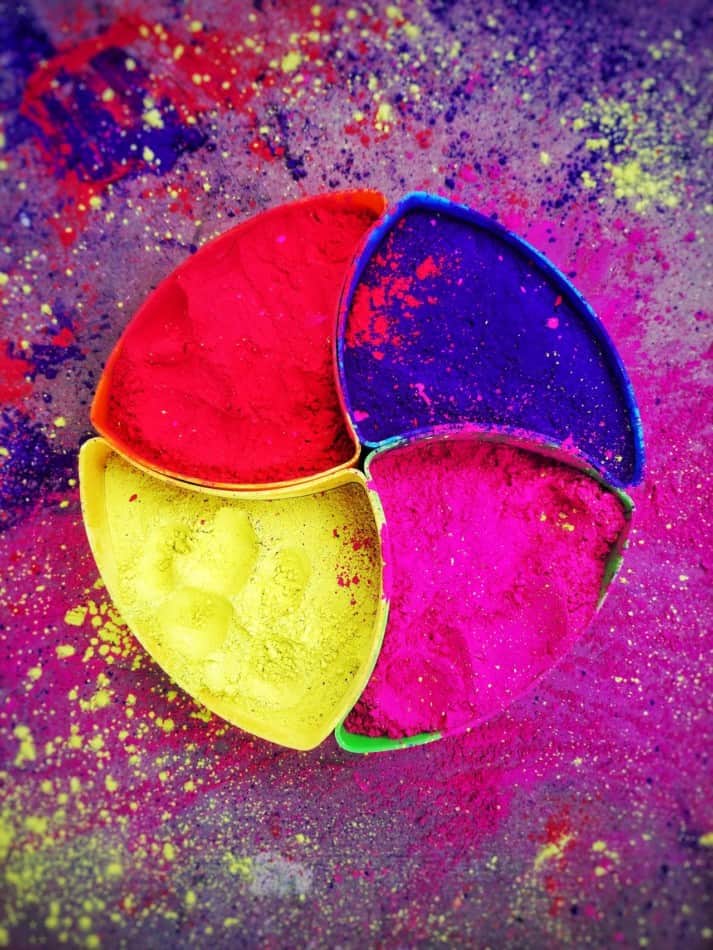
God worship: Lord Vishnu
Significance: Observed in the sense of a succession of Good over evil. When: The full moon of Phalgun month is observed as a fine day for the Holi celebration.
Dresses: People wear white-colored outfits and smear colors and color waters on others.
Food cooked: Kachori, Ras malai, Papdi chat, etc.
4. Pongal
The biggest festival after Diwali is the Pongal that is celebrated in the name of ‘’Mahara Sankaranti’’ in the States of North India whereas it is celebrated in the name ‘’Pongal’’ in Southern India. Normally, it is the five-day festival and every day earns its importance.
Mythological Reasons
Proven facts are responsible for celebrating the festival as follows:
- Tamil people correlate their festival reasons coinciding with the constellation and the solstice event that occurs twice each year. Exactly, Pongal is the Indic Solstice that the sun starts its excursion towards the north. It has been proven true, scientifically.
- Thamilar Thirunaal is the day for harvesting and people owe their respect by means of cultivated food grains in their field.
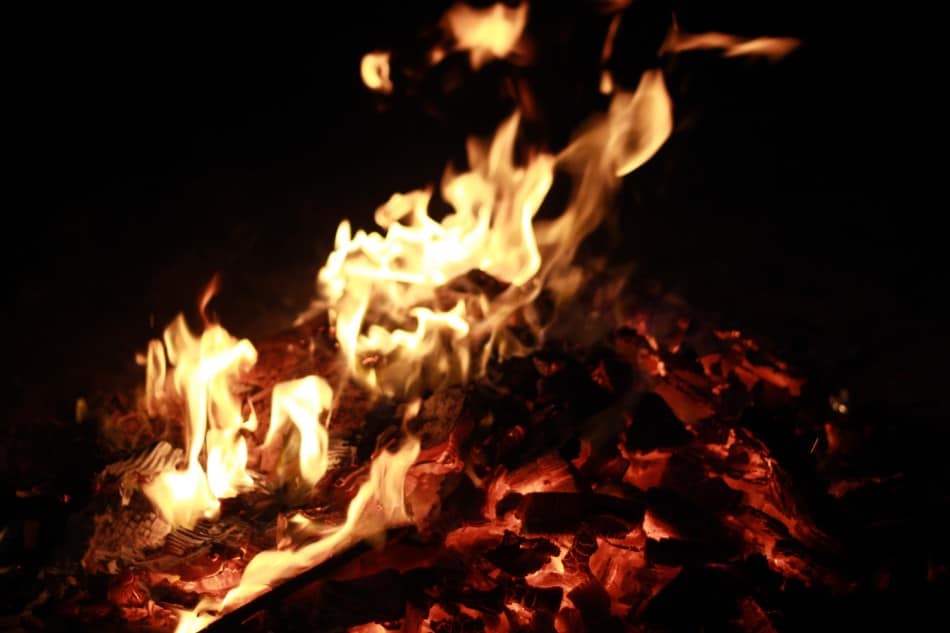
Significance: Harvest festival
God/Goddess prayed: Sun, Earth
Dressing:
For men, traditional ‘Dhoties’ and shirting are preferred but for the women, it is beautiful and coruscating saree collections. Dhoties and saree are replaced with ’Sharwani’ and the ‘Gagra – Choli’ for the men and women, respectively, in the states of Northern India. For the kids, dresses are designed and hanged out with illuminating attraction
Food Cooked: Halwa,
States celebrating
- In North India, it is called Pongal
- In Tamil Nadu, Pongal is named as ‘’Thamilar Thirunaal’’
- Andhrapradesh “Sankaranti”
Karnataka “Suggi” - Maharashtra “Mahara Sankaranti”
- Assam “Bhogali Bihu”
When: The festival is observed in the mid-January on 13th or 14th.
5. Shivratri
The festival of Shivrathri is the great night of Lord Shiva on which devotees praise the deity whole night bearing devotional fasting and conducting puja.
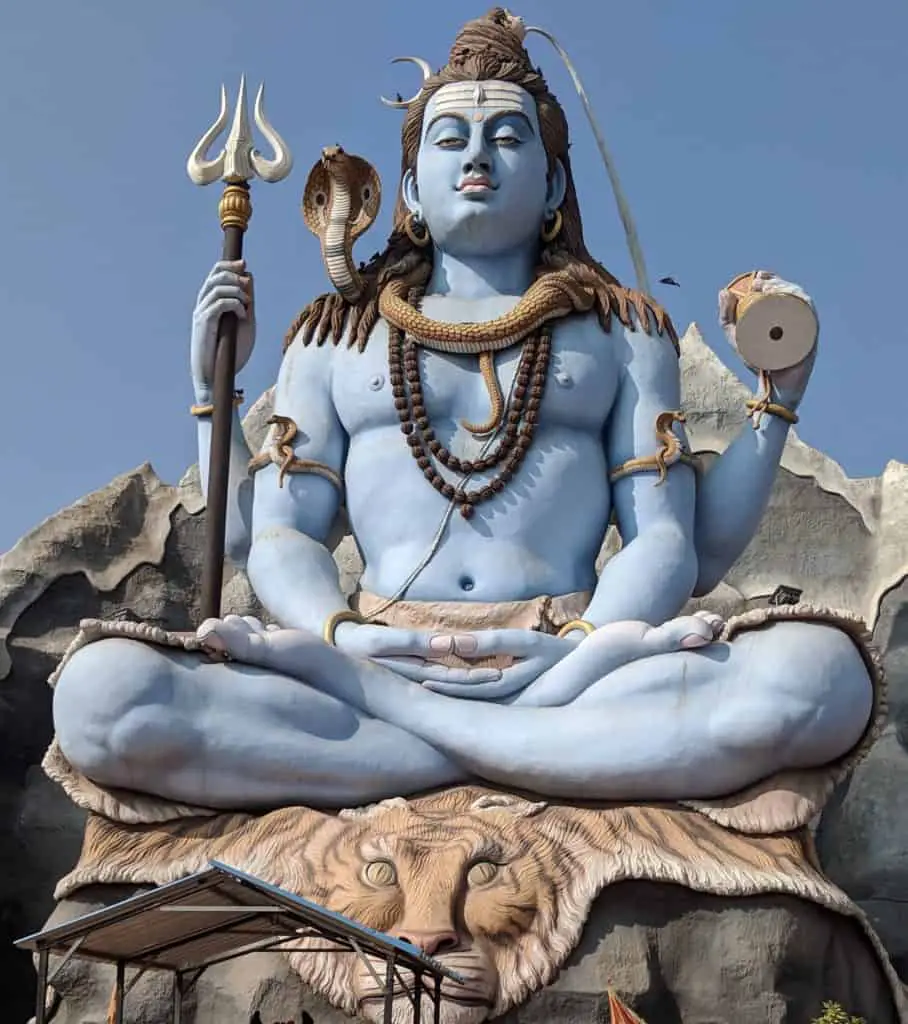
Mythological reasons
It is believed that on this night Lord Shiva and Parvathi got married, devotees of Lord Shiva are blessed by himself like ‘’Kannappa nayanar’’, etc.
Significance
The festival is very common among devotees of Lord Shiva and they begin and welcome the moonless 14th day of Phalgun month by having a ritual bath possibly in the River Ganges or else.
Dresses: They wear (any) new dresses, preferably, and fast the whole day and night and worship the Lord throughout the whole night.
God of Worship: Shiva.
It includes giving a ritual bath to Shiva lingam and offering Bilva leaves to the deity.
When: Mid of February- March the auspicious day that is 14th moonless night is chosen for worship. Throughout the devotees of Lord Shiva worship the deity important among three supernatural powers.
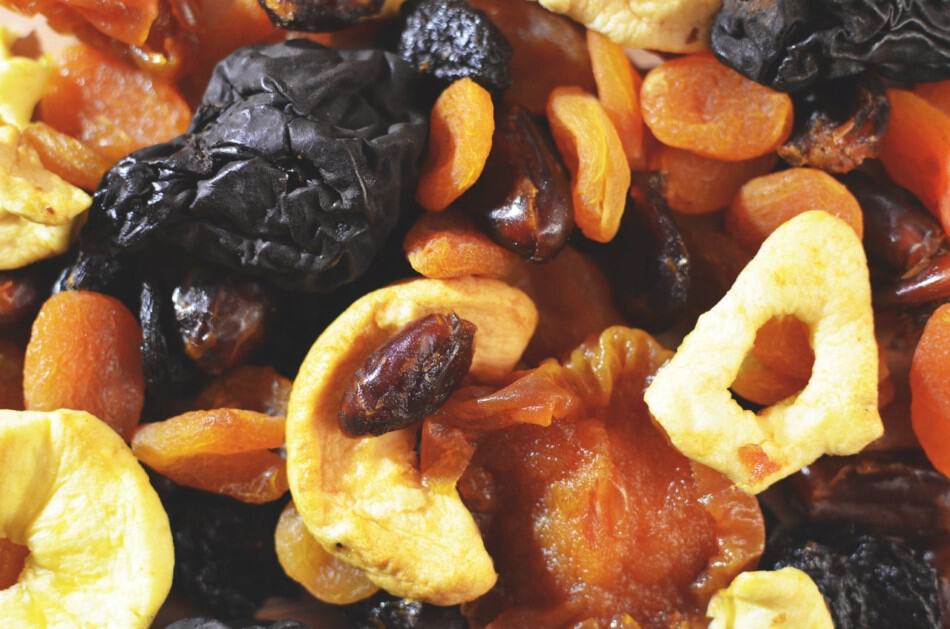
Food: Devotees maintain fasting the whole night and following day hence no special food is prepared. After completion of fasting, people take dry fruits and meals prepared with high protein.
6. Ganesh Chathurthi
Special puja will be conducted in the homes of every Hindus in and around India.
Mythological reasons: Sukhlapaksh Chaturthi of Shravana month is being celebrated as the birthday of Lord Ganesh. ‘’Chaturthi’’ means fourth as per Sanskrit Smriti.
Significance: Motak is a very special sweet offered to God. The idol of Lord Ganesh is subjected to worship and the festival lasts for four days. On the fourth day, the idol is sublimed in the ocean as a sign of ritual.
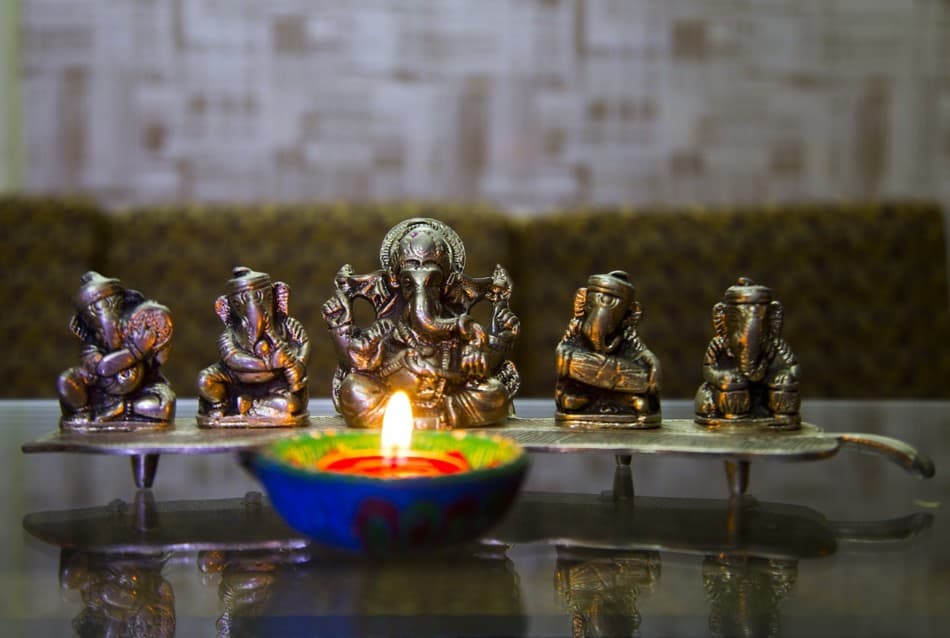
When: The birth of Lord Ganesh is observed on the fourth day of Shravana month of the Gregorian calendar.
God or worship: Ganesh.
Food cooked: Motak, Sundal.
All over the Country, Ganesh Chaturthi is very famous and people never miss the celebration. Though wearing a new dress is negotiable but they visit temples or mandirs.
7. Raksha Bandhan
Festival for Brothers and Sisters.
Mythological reasons
The festival commemorates the relationship between brothers and sisters. Finding and creating a bond between them.
Significance: On this day, sisters tie a band or thread decorated with rakhi on the wrist of their beloved brothers. The knot of this Rakhi denotes or emphasis the promise of security ensured by the brother to his sister. Sweets and gifts are shared between two and the traditional festival is observed mostly in the Northern states of India.
Food cooked: Sweets predominantly.
When: August of every year is supposed to celebrate Raksha Bandhan.
Dresses: Wearing traditional or modern dresses, sharing sweets are highlights of this Festival.
8. Krishna Janmashtami
Another event of celebrating the birth of God is Krishna Janmashtami.
Mythological reasons
Lord Vishnu who incarnated in the name Krishna was born to his beloved truthful devotee Devaki and Vasudev. The eighth day of the dark fortnight is called Ashtami along with the fall of star Rohini together is observed as Krishna Janmashtami.
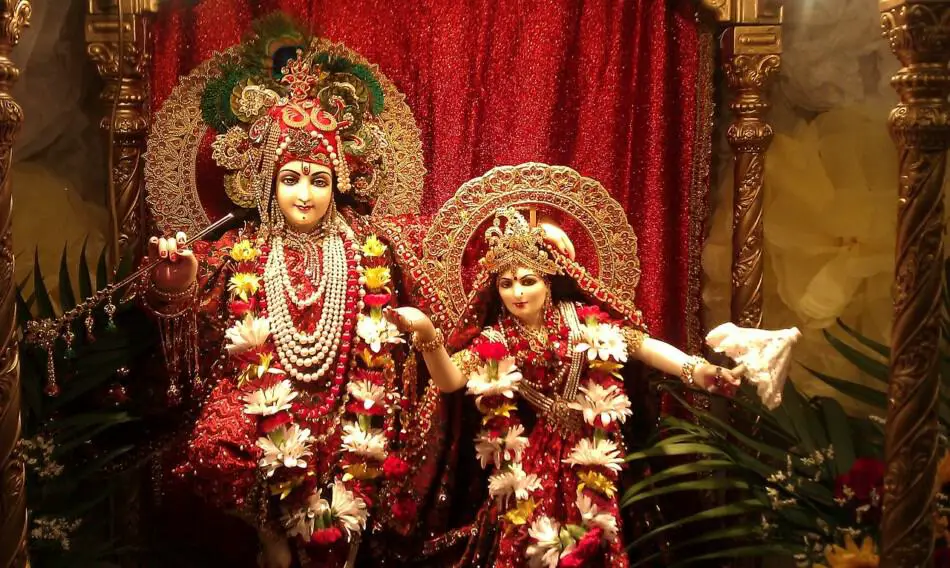
Significance
An idol of Lord Krishna is raised in the puja room of Hindu houses and the footprints are impressed throughout the path from doorstep till the pooja room denoting that little Krishna walk around the house.
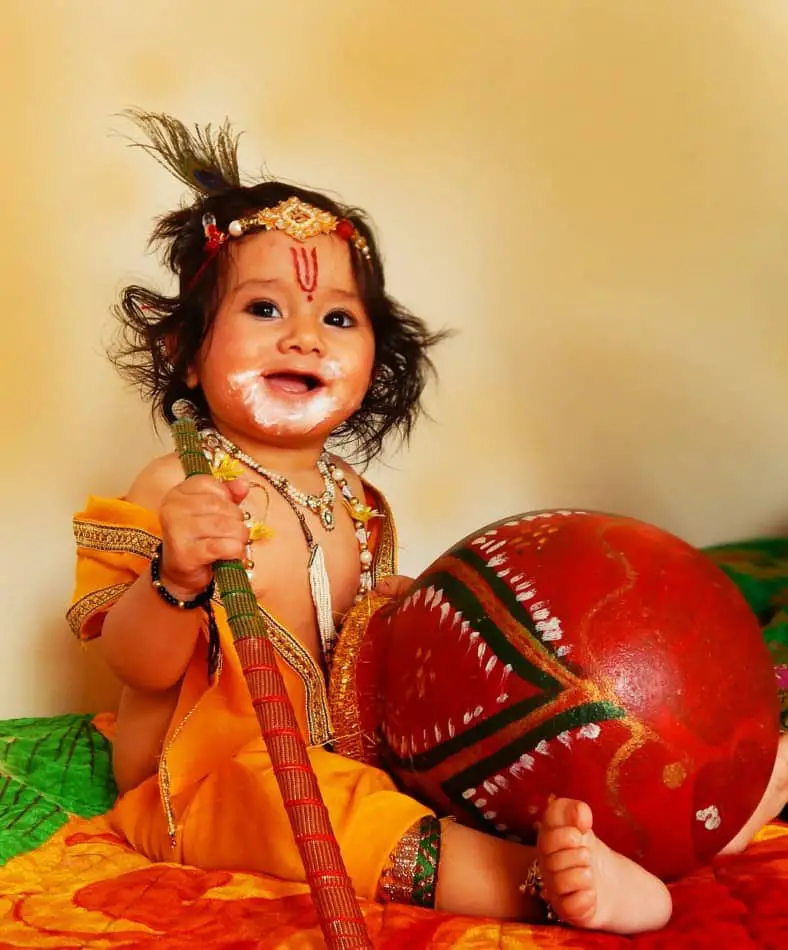
God of worship: Little Krishna.
Food cooked: Sweets and snacks are prepared specially and children residing at the house are decorated as Krishna and Radha, as well.
When: Combination of ‘’Ashtami thithi’’ and ‘’Rohini’’ star during the dark fortnight of August – September of every year.
9. Hanuman Jayanthi
Again the celebration is conducted praising the birth of Hanuman.
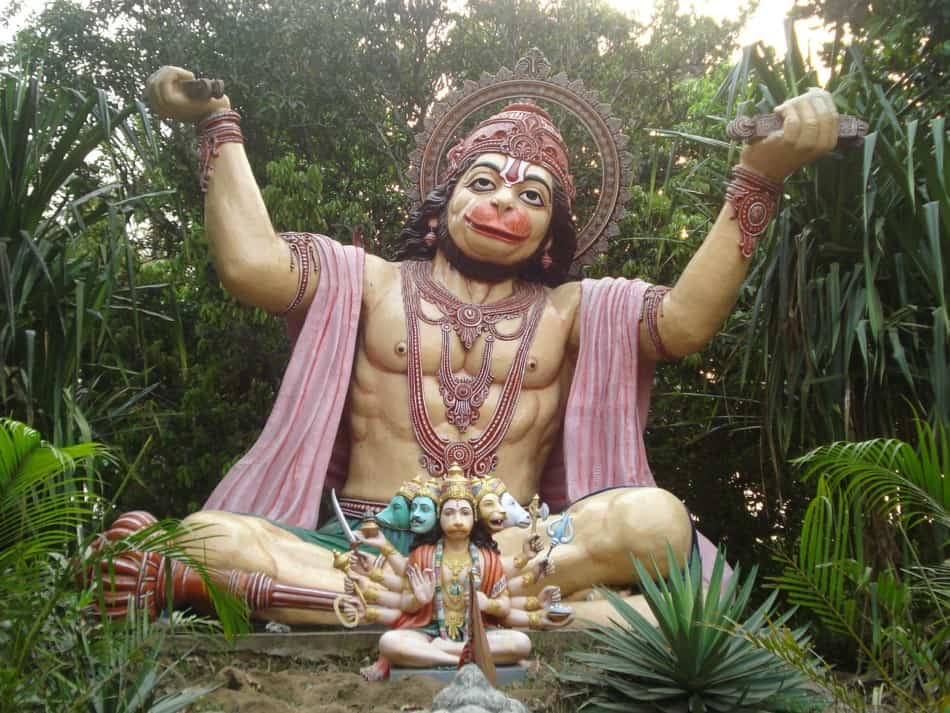
Mythological reasons: Hanuman, the true devotee of Rama is believed born with superpowers of Lord Shiva
Significance: People observe the event to visit temples and apply red sindoor as a symbol of purity, chaste, and loyalty.
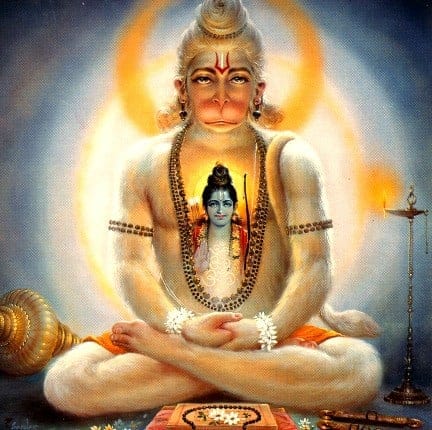
God of worship: Hanuman
When: December last week or the first week of January along with Fall of Moola star co-ordinate the celebration of Hanuman Jayanthi.
Food cooked: Vadai, ven Pongal, cow’s butter.
Dresses: Negotiable.
10. Saraswati pooja
More important festivals that Hindus specified for praising education and the Goddess of education. The ninth day of celebration in the Navrathri is the Saraswati pooja.
Mythological reasons
According to myth, the 9th day of Navratri is celebrated as Saraswati pooja. Three different forms of Goddesses get together to defeat Mahishasuran and three days of the last lap are associated with Goddess Saraswati.
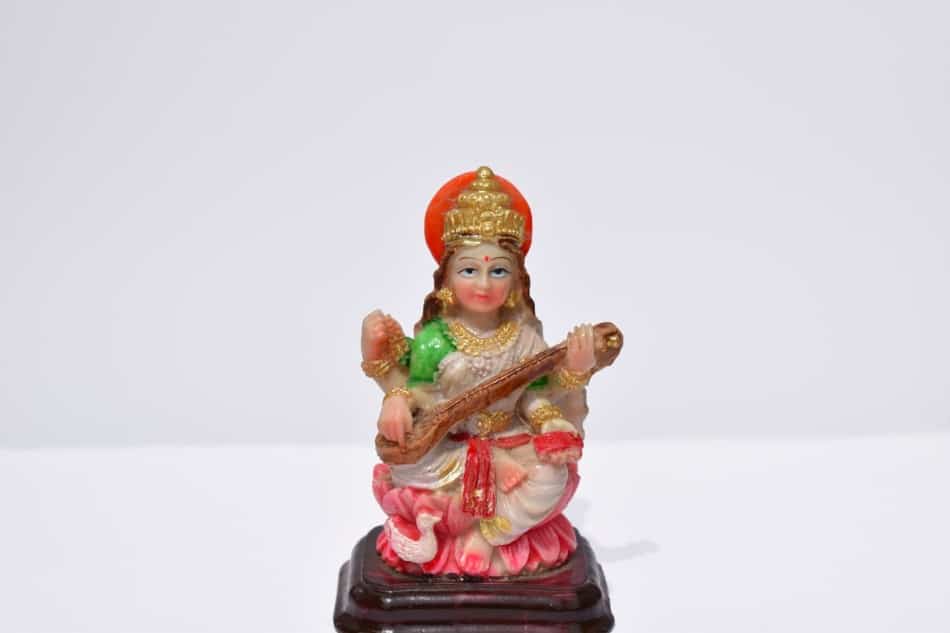
Significance
On this auspicious day, Books and materials necessary for studying and the tools that help people for their work are kept in front of Saraswati. The process is called ‘’Yedu adukkuthal’’. Tamil people believe that Goddess Saraswati is responsible for education.
Goddess worshipped: Lord Saraswati.
Dresses
Basically, the festival is meant for education hence no preference is given for wearing new dresses rather studying material and working tools are treated well as offering to Goddess.
Food cooked: Snacks made of sprouts like Sundal along with puja offerings are prepared as special cookery items.
When: 9th day of dark fortnight of ‘’Purataasi’’ month according to the Gregorian calendar.
11. Thaipoosam
The traditional festival is being observed regionally in the State Tamil Nadu. The Gregorian month showing the fall of star ‘’ Poosam’’ on a particular day is selected as auspicious for a festive celebration.
Mythological Reasons
The festival is observed to commemorates the occasion when Goddess Parvathi offered Murugan a spear with which the later demolished demon ‘’Padmasuran’’.
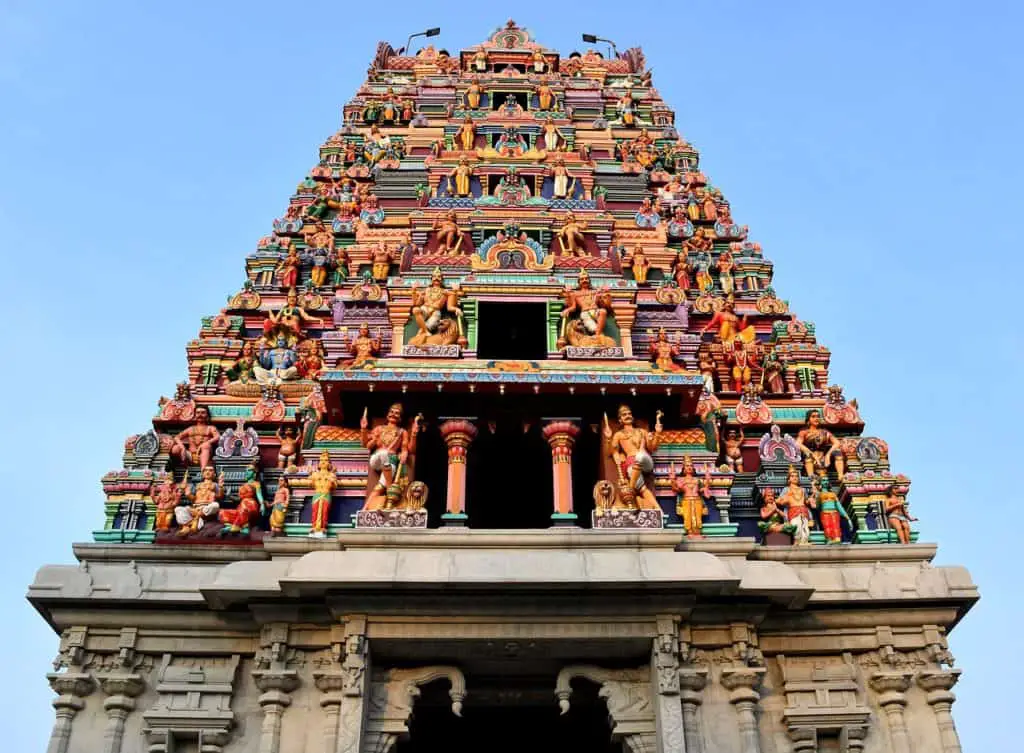
God of worship: Lord Muruga.
When: Usually, last week of January or the first week of February.
Significance
People shower their worship and pay penance as a token of gratitude for their answered prayers. On this special day, Kavadi Attam is danced by bearing the kavadi on the shoulders. In addition to this, devotees pierce their bodies with hooks and hooks to pull the burden.
Dresses: Dresses in yellow or saffron in color.
Food cooked: Aromatic milk or ‘’Panchamirtham’’.
Read complete story of the festival here
12. Shigmo
The festival is observed mainly in Goa
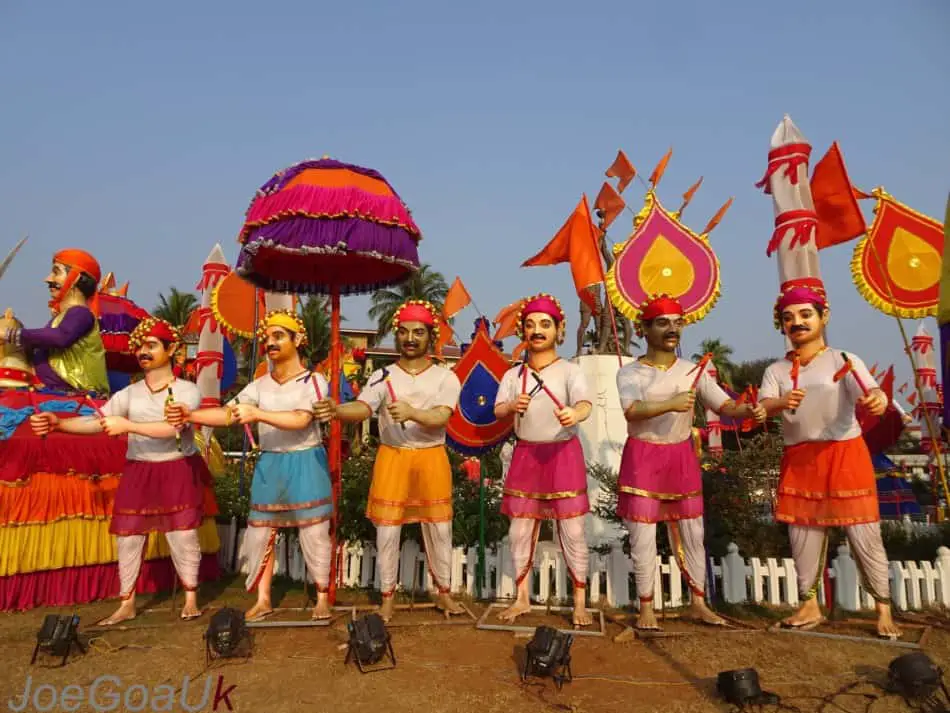
Mythological reasons: An alternative version of Holi festivity includes the Dahan of Lord Kama by Lord Shiva.
God of worship: Lord Shiva.
Significance: The reason for observing the festival is equally the same as Holi. People visit friends and family, relatives on this day.
Food cooked: Sweets and traditional food items are been prepared and shared on this day.
Dresses: Usually, white-colored jeans; T-shirts, Salwar Kammis, etc choose to wear.
When: Fifth day of five days celebration.
13. Rang Panchami
The name derives the festivity of smearing colors and holy waters.
Significance: The festival is observed in Maharashtra and of Madhya Pradesh as a festival of colors or the festival of love, etc.
Mythological reasons: The festival includes the five-day celebration and Rang Panchami is the fifth day that falls after full moon day of Phalgun month. The festival is named accordingly concerning the place and region.
God of worship: Both Shiva and Vishnu
Food cooked: Fifteen types of sweets and snacks are prepared to observe and celebrate the festival.
When: Full moon day of Phalgun, Gregorian calendar or March – April.
14. Vasant Navrathri
The festival is just like Navrathri but falls to celebrate by the month of Chaithra according to the Gregorian calendar.
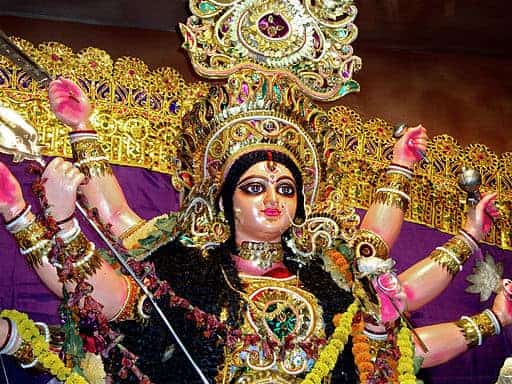
Mythological reasons
Shakthi or Parvathi is worshiped for her divine powers. Also, the festival coincides with Rama Navami, too and praises their deity with all commotion and devotion. They fast throughout none days and pray for their well being.
Significance: The festival is observed in the name of Goddess Shakthi and on these 9 nights devotees fasts and worship their deity in nine different forms.
Goddess worshipped: Shakthi Devi.
Dresses: Formal new dresses are worn by this auspicious day.
When: Mid April – Mid May.
15. Rama Navami
The birthday of Rama.
Mythological Reasons
God of preservation has incarnated as Human being, and that is on the ninth day of the bright fortnight, Chaithra month of the Gregorian calendar.
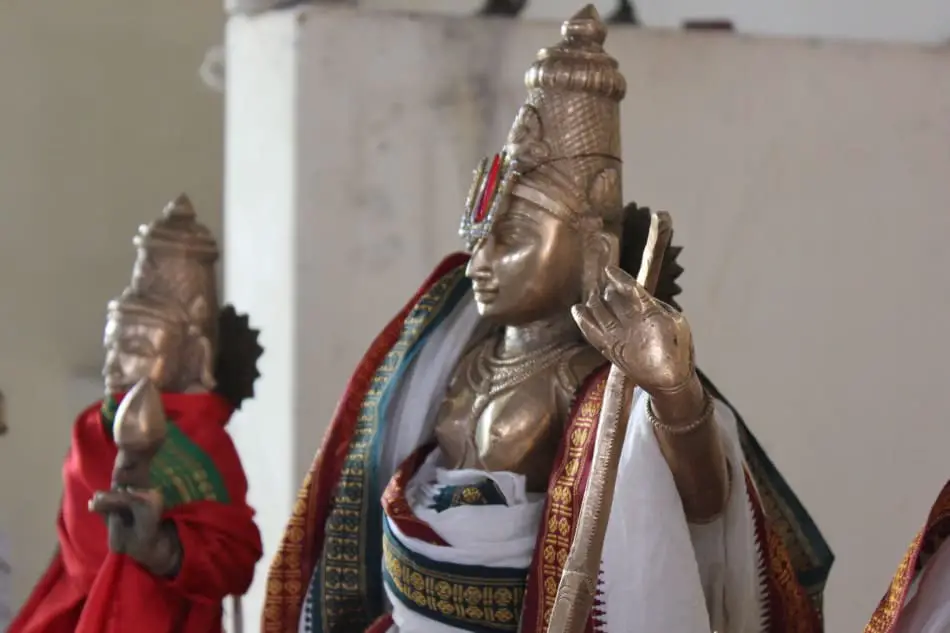
Significance: People also believe that on a particular day the marriage of Lord Rama took place and conduct ‘’Kalyanotsavam’’ every year in remembrance.
God worship: Rama.
When: The festival is more likely observed in April or May the ninth day of the bright fortnight. Henceforth, the name of the festival is ‘’Rama Navami’’.
Dresses: More attention is towards God and worship hence no aware of New dresses.
Food cooked: Similarly, no special menus.
16. Gudi Padwa
New Year event.
Significance: Gudi Padwa is also known as ‘’Chetichand’’ celebrated on the first day of month Chaithra is being observed as New Year for Gregorian calendar.
Mythological reasons: Natives of Maharashtra and Goa are observing the festival and welcome the New Year wearing new dresses, visiting friends and relatives on this day.
When: April 14th of every year is auspicious to observe the festival.
Food cooked: Traditional food of Maharashtra.
Dresses: New dresses as per the interest of individuals.
17. Ugadi
Telugu or Kannadigan New Year
Significance: The start of a new era is being observed on the first day of Chaithra and the term Ugadi is denoted by Kannadigas and Telugus.
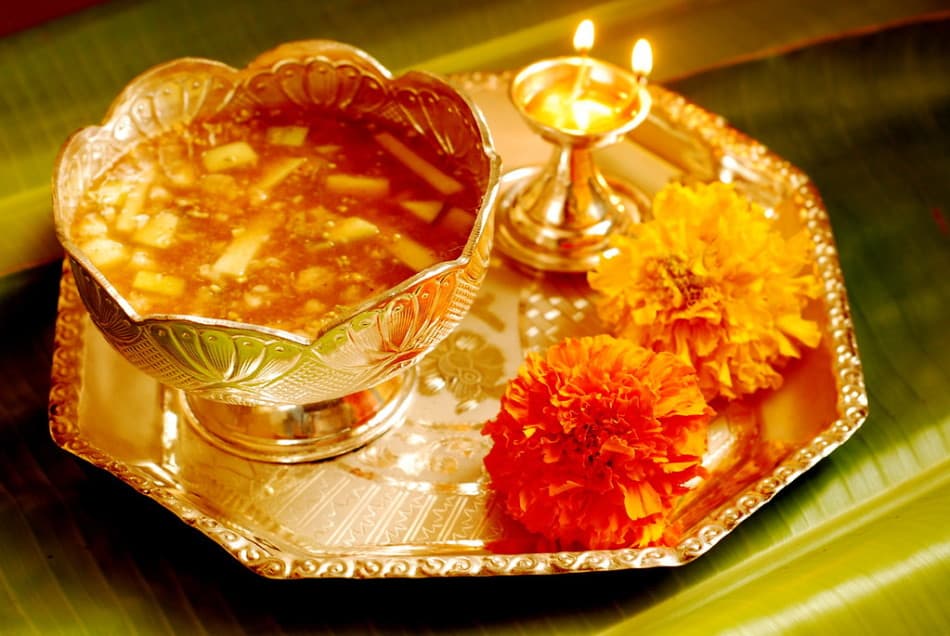
Deity: Lord Vishnu.
Food cooked: On this day, people prepare sweets, especially, Holigey or Bhashalu more special made from Maida, coconut stuff, etc.
Dresses: New dresses are worn on a special day, sweets and gifts are exchanged among themselves, visit temples and each other, etc. Mythological reasons: The celebration ends with smart occasions.
18. Vishu
The same New Year celebration occurs in the specific name, particularly, in the State Kerala.
Mythological reasons: The celebration includes an arrangement of flowers, fruits, precious metals like Gold and Silver, and money in front of the Deity Lord Vishnu or front of Mirror.
Deity: Lord Vishnu.
Significance: The arrangements are made last night of Phalgun and by the dawn or before sunrise every individual of the house awaken and visit the flower arrangement made. People, initially, look at the arrangement through the mirror and worship God. The event is named as ‘’Vishu Kani nokkuha’’ means looking the fruits and flower arrangement through the mirror. Vishu – New Year, Kani – Fruit, and Nokkuha – viewing or looking through, once after, the event got over people wear.
Dresses: Wear any New dress and visit temples and eat the New Year Feast.
When: April 14th each year.
19. Tamil New Year
The same New Year celebration is observed in the same manner as to how Kerala observes.
Mythological reasons: According to natives of India or Hindus across the world, the Gregorian calendar begins with Chaithra month.
Deity: Lord Vishnu, again.
Significance
The event ‘’Vishu Kani nokkuthal’’ will take place in Tamil Nadu in the dawn or before sunrise. After the event, people visit the nearby temple and friends and relatives’ house.
Dresses: Wearing new dresses and preparing the New Year feast is additional commemorates of the festival.
When: Possibly, the event or festival falls on April 14th of every year in Tamil Nadu, Kerala, Maharashtra, Assam, etc.
Food cooked: Traditional Tamil Nadu food with hot and spicy dishes showing the enlarged menu.
20. Chaithra Purnima
Full moon night event.
Mythological reasons
Falls after 15 days once Vishu is celebrated is Chaithra Purnima. Women observe the event in the name of Lord Vishnu and Shiva for the prosperity of the husband. The whole day they fast after the ritual bath and at night special puja is conducted offering the food prepared to the moon and the respective deity, too.
Significance: Most of Hindus in Tamil Nadu observes the event every year.
Deity: Shiva and Vishnu.
Dresses: Wearing new dresses are dependent on the well and wish of people hence it is optional.
Food cooked: Sweet Pongal and Jeera, a special sweet are made on a special day to offer the deity.
when: April 14th every year.
21. New moon nights or Amavasya
More important just like other festivals in Hinduism.
Mythological reasons
New Moon nights are more special among Hindus because they pay their penance or respect to their forefathers on this day. ‘’Tharpanam’’ literally means owing respect given by men to their forefathers passed away. Hindus believe in rituals giving respect to their elders and seek their blessings to lead a prosperous life.
Significance
This New moon occasion arrives once in a month and there are twelve new moon nights in a year but that new moon arrives in January, July and September are more special. People do not miss this day to deliver their respect to their passed away elders. Tamil people owe their respect without fail and they follow the rituals even beyond the limits of oceans.
Deity: Forefathers of individuals.
When: Dark night arrives once a month.
Food cooked: Special menu extends which is rich in brinjal, drumstick, etc.
22. Onam
The festival is traditionally celebrated in Kerala as a festival of Harvest. Though Onam is a festival of Hindus, it is observed more predominantly by natives of Kerala. The festival commemorates the rule of Demon Emperor, Mahabali, who loved his fellow beings.
Mythological reasons
Lord Vishnu incarnates as dwarf ‘’Vamana’’ visited the emperor asking for three steps for his settling as a denunciation. After successful stepping of two steps measuring the earth and space, Vamana asks the emperor where about the third step been rested. Mahabali admits himself for stepping the third foot, later, Vamana defeated the ruler and sent him to the netherworld for himself.
Deity: Lord Vishnu.
Significance
The festival comprises of ten days celebration and includes various types of festivities like flower intricate ceremony, elaborating the dining of Lunch, Kaalzhchakulla in Guruvayoor, ferocious boat race, Onapottan, etc. The festival lasts for ten days with unique events on each day.
When: The last ten days of September considered as auspicious to celebrate Onam.
Dresses: People wear traditional Dhoties and Saree respectively.
Food cooked: Mouthwatering Kerala traditional dining with Elaborated lunch.
23. Thiruvathirai
Mythological reasons
The special event on which Lord Shiva exemplifies as ‘’Natraj’’ and shower his blessings to the fellow beings. The event coincides with the fall of star ‘’Thiruvathirai’’ and the full moon day of ‘’Margazhi’’ according to Tamil calendar.
Significance: The festival is common in Tamil Nadu and Kerala. People fasts on this day and visit the temple for ‘’Arudra darshan’’.
God of worship: Lord Shiva showers his blessings to the fellow beings on the earth.
Food cooked: Thiruvathirai kali is the familiar sweet bestowed to prepare on this special day.
When: There is no event for Thiruvathirai in the calendar year of 2019 but for the next year 10th of January is found as auspicious for the event.
Dresses: Gains no importance.
24. Thirukarthigai Deepam
Mythological reasons: The full moon night coincides with the star Karthikai evokes the celebration of Karthikai Deepam.
Significance
Sokka panai special light meant the greedy and evil thoughts of human beings are burnt in front of the Temple. It is considered more auspicious to prepare mavilakku on this night. Usually, the event is observed in the evening lit lights throughout the houses.
Deity: Lord Shiva is the God of worship of this festival and is being called as festival of lights throughout the houses.
Food cooked: ‘’Mavilakku’’ and Steamed ‘’kolulattai’’ is made to offer the God of worship.
When: People of Tamil Nadu observe the festival in November last week or the first week of December.
Dresses: Tamil Nadu people wear the outfits that worn on Diwali and burn crackers along with ‘’Sokka panai’’.
25. Kandar Shashti
Mythological reasons: Fall of demon ‘’Padmasuran’’ done by Tamil Kadavul Murugan is celebrated as Kandar Shashti vratam. Lord Muruga was given birth by Lord Shiva and prone to defeat the demon king Padmasuran who has been starving the fellow beings. For the purpose, Lord Muruga fought ferociously to defeat the same and the war between the good and evil lasts six days. On the sixth day, the demon was defeated by Lord Muruga.
Significance: People fasts all the six days and visit a temple where people commemorate the event demonstration of the fall of Padmasuran. Tamil people never fail to observe the festival and are a very common and familiar festival.
God of worship: Lord Murugan.
When: Usually, Diwali is celebrated in the new moon day of mid- October or mid-November and the continuous six days are commemorated as Kandar Shashti event.
Food cooked: Usually, people fast these days but some intake steamed rice with sugarcane or jaggery. Drink special jaggery mixed lime juice to retain hydration.
Dresses: Nothing special.
26. Akshaya Tritiya
The most popular festival that Hindus and Jains celebrate every year and buy Gold.
Mythological reasons
This is exactly the day chosen by God Ganesh start writing one of two epics called ‘’Mahabharata’’. It is also believed that while Pandavas were in exile, a special bowl named ‘’Akshaya patram’’ was given to them that never empty but keep on giving food on demand.
Significance
Many importance myths and reasons are followed by observing the festival. Like, people feel the betterment and prosperity in any act of business or construction that has started on this special day. Besides, Hindus buy jewels and ornaments on this day for its prosperity.
God of worship: Lakshmi Devi and Lord Parasurama’s birthday
Food cooked: Payasam, Kalkandu sadham and milk is condensed and offered for god.
When: Tritiya – 3rd Of bright fortnight of Chaithra month of the Gregorian calendar.
Dresses: People use to wear white color dresses.
27.Vykunda Ekadasi
Another festival is known for fasting.
Mythological reasons
Gate of the inner sanctum of Lord Vishnu is opened on this night. Fasting on this night is more auspicious that eventually take people towards Almighty.
Significance
Mythological reasons for Hindus coincide with the geographical facts that the day is unlike other days. People fast on this day throughout and worship god for getting rid of sin.
God worshiped: Lord Vishnu.
Food cooked: Lime juice is drunk throughout the day and night to maintain an empty stomach.
When: 10th bright fortnight of Margazhi or Dhanu month of the Gregorian calendar.
28. Karva Chauth
The familiar festival was common among married women and celebrated in North India.
Mythological reasons
‘’Karva’’ – earthen pot and ‘’chavuth’’ – four. Women store wheat in the earthenware vessel indicating the beginning of rabi crops in the Northeastern region.
Significance: Married women fast from sunrise till moonrise and pray the god for the longevity of their husbands.
God of worship: Moon
Food cooked: fasting festival so no specification.
Dresses: Wedding dresses preferably in red, gold saris and shalwars.
When: Fourth dark fortnight of Karthikai of Gregorian calendar.
29. Bonalu
Festival of Mahabali
Mythological reasons: Increase of death reported due to Plague disease. People worshiped Mahabali to rescue them and brought the idol of Goddess back to the temple. As a result, Mahabali incarnated to rescue fellow beings.
Significance: It is believed that Goddess returns back to the maternal home to visit the fellow being. She accepts the love, affection and food offerings by her devotees.
Deity: Mahabali.
Food cooked: Payasam, neem, and turmeric incorporated holy water.
When: During Ashada month.
Dresses: Traditional dresses and negotiable.
30. Naga Panchami
Festival of snakes.
Mythological reasons: Offering prayers to snakes is more auspicious and lend fortunes of goodness in one’s life.
Significance: Women worship the Snakes as God to achieve goodness in life. 5th day of the waning moon of Shravana month chosen for observing.
God of worship: Snakes and serpent.
Food cooked: traditional diet.
When: Sukhla paksha 5th day of Shravana month.
31. Varalakshmi vratam
Festival for women who ask for the longevity of their husbands.
Mythological reasons: Lord Brahman preached a very special form of puja especially for women. Today, women undertaking such pooja for the well-being of life in all aspects.
Significance: Women raise the idol of Lakshmi Devi in the pooja room. Commit all spiritual practice of pooja. Offer a yellow-colored bunch of threads to the goddess and to distribute among women after pooja.
Deity: Lakshmi Devi.
Food cooked: Traditional food.
When: Second or third Friday of August month before Purnima. Most preferably the second Friday.
32. Guru Purnima
A special day dedicated to teachers and preachers.
Mythological reasons: Guru is the respectable person that vanishes the darkness of ignorance. He is the one that preaches Dharma, karma, and Satyam of Life to Human beings.
Significance: The day is also called as Vyasa Purnima. The one who divided or edited the wholesome of Veda into four subdivisions as Rig, Sama, Yajur and Adharvana.
Deity: Teachers or preachers.
Food cooked: Negotiable.
When: Full moon day in the Hindu month Ashada of Gregorian calendar.
